       (Translate this site) |
|
Site map
|
       (Translate this site) |
|
Site map
|
BACK to Me and my Shadow supercar: Project notes
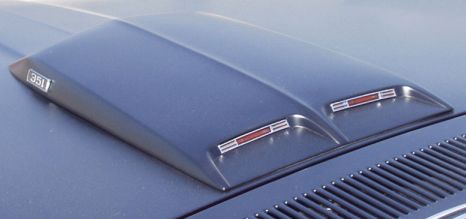 |
To left is what the original, non-functional Mach 1 hood scoop looked like. The lights in the rear were extra turn signal indicators. |
|
Shadow's original 351 Windsor with four barrel carburetor looked something like that at right-- only dirtier. And missing some items like the factory fan shroud (I'd end up making a custom replacement myself).
|
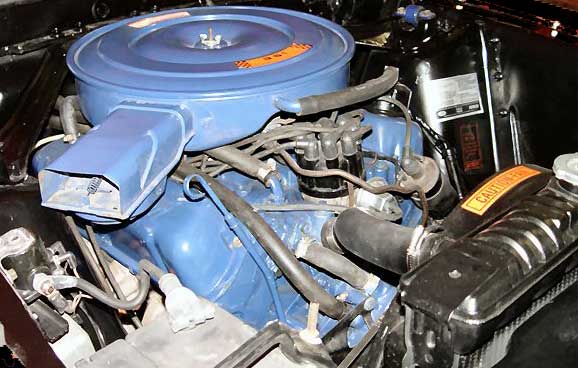 |


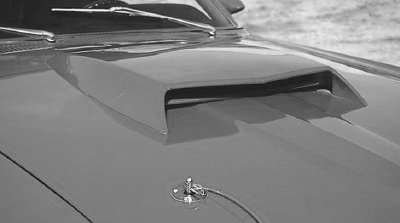
|
I would eventually replace my small non-functional Mach 1 hood scoop with a larger Boss 429 scoop. To left can be seen what such scoops looked like from different angles. |
|
Of course, to make the new scoop actually ram air into the engine required some extra cutting and fabricating. One thing I did was cut a hole in the hood underneath the new Boss 429 hood scoop, something like that seen to right.
Although I'm fuzzy on the details now, decades after the act, I guess I used the top rim of a velocity stack as a template for the hole in the hood. For afterwards I'd be able to replace the full-sized air cleaner with just that velocity stack atop the carburetor, for scheduled races. The mouth of the stack would fit perfectly into the hole when the hood was closed. |
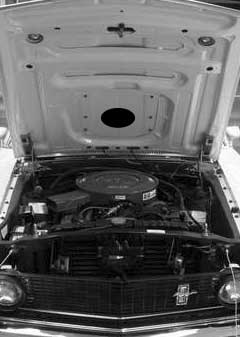 |
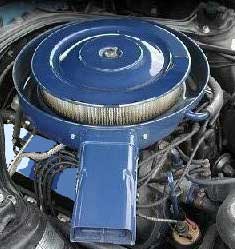 |
Of course I mostly used the stack for the drag strip. And even then I also had a thin round piece of filter material attached to the narrow cross piece inside the stack's throat (which itself fastened the stack to the threaded stud arising from carb center), to keep anything solid from being ingested by Shadow while racing. 99.99% of the time Shadow breathed through his proper, full-sized air cleaner.
But that air cleaner too was modified from standard. Namely, I cut the outer ring off the top of the factory air cleaner so air could come in from above-- as seen to left. To finish off the job I acquired some kid-sized bicycle tires of the proper diameter, and attached one to the underside of the hood, and one to the outer rim of the air cleaner, so that when the hood was closed one tire would fit snugly inside the other and the combination act as a seal between hood and air cleaner, thereby forcing the air caught by the scoop above to be 'rammed' into the carburetor. |
The ram air seal must have worked pretty well. For you could often hear the rush of air into the hood scoop as Shadow breathed through it at idle.
| To right can be seen what my friend Steve's 1971 Boss 351 motor looked like. It was equipped from the factory with NASA style sunken hood scoops integrated into the air cleaner for some sort of ram air function. This may be where I got the idea I could use bicycle tires to seal my own arrangement off. | 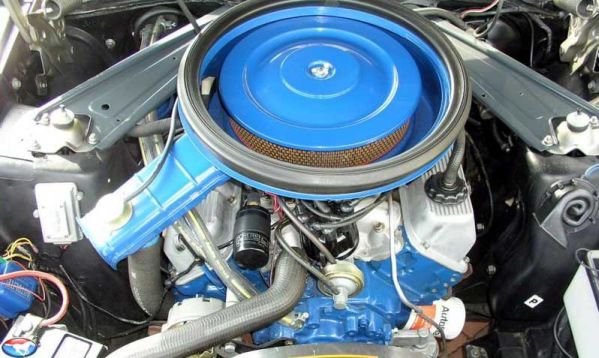 |
| BACK to Me and my Shadow supercar: Project notes | 1969 Ford Mustang Mach 1 supercar site map |